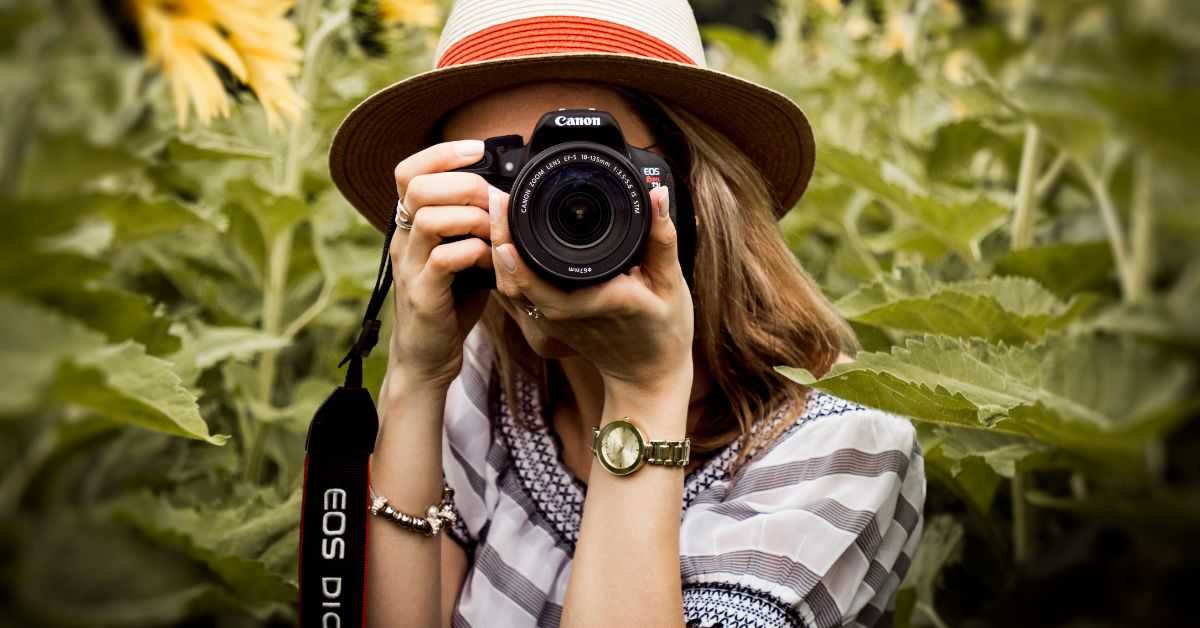Digital Single Lens Reflex (DSLR) cameras have become a favorite among photography enthusiasts worldwide. Boasting unparalleled image quality, lens selection flexibility and ultimate control over photography settings, DSLR Cameras make photography enthusiasts’ experiences memorable – both professional and hobbyist alike.
Due to the significant number of different DSLR cameras, it can be challenging to choose the model that fits your budget, and you have all the features you need. So if you are trying to find the best DSLR cameras to meet your needs, below is a list of the best DLSR camera.
How did we select the top DSLR Cameras?
We select DSLR cameras based on various key criteria is under below,
Image and Video Quality: This was the primary objective. For features, including factors like megapixel count, sensor size, ISO range, shutter speed and autofocus system.
Ease of Use: Ease of use refers to factors like user interface design, easy access to settings and ergonomics.
Value for Money: Comparing pricing against features and quality delivered.
Customer Reviews and Ratings: To take into account real user experiences we relied heavily on reviews from real users as a source.
After-Sales Service: Brands that offered reliable customer support were given preference to ensure users could access assistance when needed.
Our Top Picks DSLR Camera
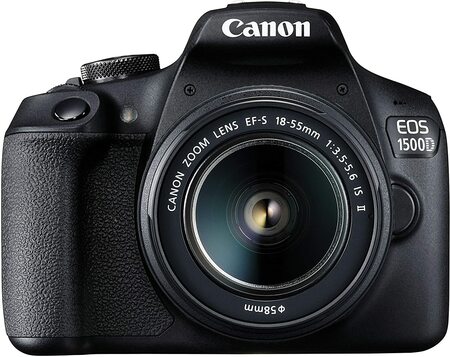
₹40,000
Canon EOS 1500D
+ Versatile EF-S lens mount for compatibility with various lenses
+ Powerful DIGIC 4+ image processor
+ 9 autofocus points
+ Full HD video recording with manual control
+ Built-in WiFi, NFC, and Bluetooth
+ Wide ISO sensitivity range
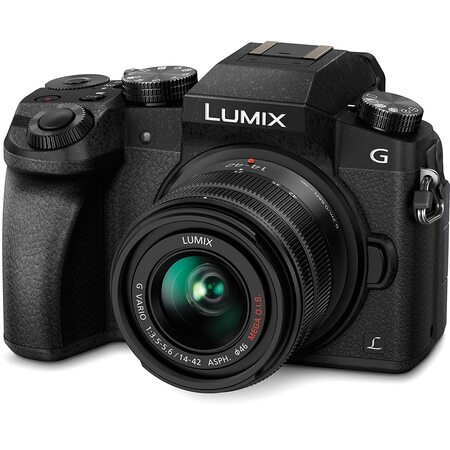
₹50,000
Panasonic LUMIX G7 Mirrorless
+ 4K QHD video recording
+ 8MP Photo Burst Mode
+ WiFi-enabled for easy connectivity
+ High-resolution OLED Live View Finder
+ 3-inch tilt/swivel LCD display
+ External mic port for enhanced audio recording
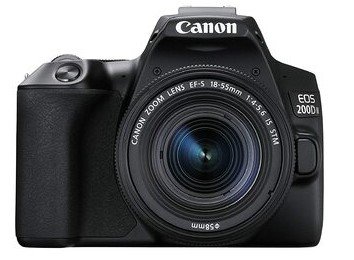
₹60,000
Canon EOS 200D II
+ Eye Detection Auto Focus
+ Built-in Wi-Fi connectivity
+ 3-inch display for easy viewing
+ APS-C size photo sensor
+ Cutting-edge technology
+ Best-in-class performance
+ Compatible with Canon EF-S mount
+ Secure Digital (SD) card support
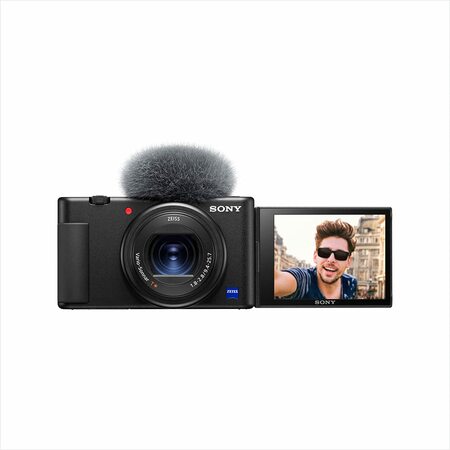
₹60,000
Sony Digital Vlog Camera ZV-1
+ Large aperture 24-70mm ZEISS lens
+ Directional 3-capsule inbuilt-mic with windscreen
+ Vari-angle LCD screen for selfie shooting
+ 4K movie recording with Video EYE AF
+ Real-time tracking for precise focus
+ One-push Bokeh switch for background blur
+ Time-lapse mode for cinematic effects
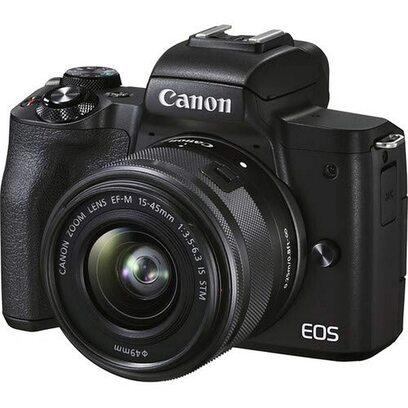
₹60,000
Canon M50 Mark
+ Mirrorless Form Factor
+ Live View Feature
+ In-camera YouTube Live Streaming
+ 4K Vertical Video Recording for Social Media
+ Wireless Connectivity with Smartphone and Cloud Storage
+ Vertical Vlogging Made Easy
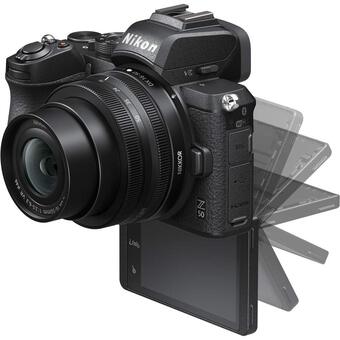
₹80,000
Nikon Z50 Mirrorless Camera
+ Time Lapse Feature
+ 3x Optical Zoom
+ 3.2-Inch Screen Size
+ HDMI Connector Type
+ Additional Battery Included
+ Automatic Display Switching
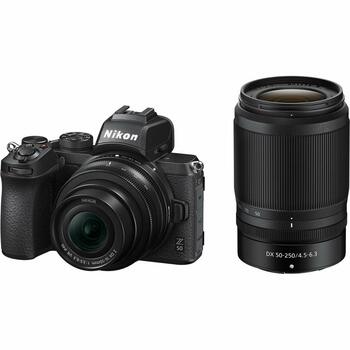
₹90,000
Nikon Z50 Mirroless Camera
+ Compact, Mirrorless Form Factor
+ Time Lapse, Bluetooth, Wi-Fi
+ 3x Optical Zoom
+ Full Frame (35mm) Photo Sensor Size
+ UHD 4K Video Recording
+ 3.2-Inch LCD Screen with 180° Flip Design
+ Nikkor Z DX 16-50mm Lens Included
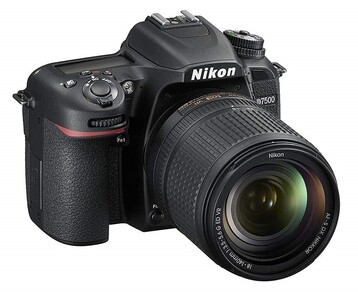
₹1,00,000
Nikon D7500
+ Special effects modes for creative shots
+ Versatile optical zoom range
+ Large and vibrant display
+ Bluetooth and Wi-Fi connectivity
+ 4K UHD video recording capability
+ Fast and accurate autofocus system
+ High ISO sensitivity for low-light photography
+ Compatible wide range of Nikon lenses
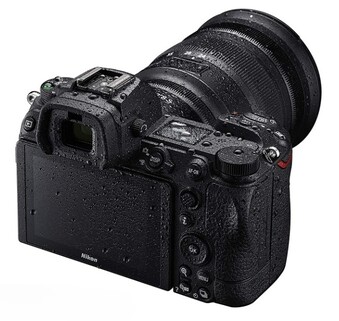
₹2,00,000
Nikon Z6
+ Dual EXPEED 6 Processors
+ UHD 4K Video Recording
+ 273-Point Phase-Detect AF System
+ NIKKOR Z 24-70mm f/4 S Lens
+ Robust Magnesium Alloy Chassis
+ Weather-resistant Design
+ Extra Battery & 2.9x Optical Zoom
9 Best DSLR Camera Review
1. Canon EOS 1500D 24.1 Digital SLR Camera
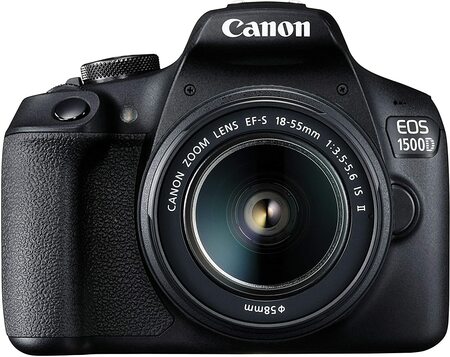
Key Feature:
- High-resolution 24.1 MP APS-C CMOS sensor
- Wide transmission frequency range for enhanced connectivity
- Versatile EF-S lens mount for compatibility with various lenses
- Powerful DIGIC 4+ image processor
- Fast and accurate autofocus with 9 autofocus points
- Full HD video recording with manual control and selectable frame rates
- Built-in WiFi, NFC, and Bluetooth for seamless connectivity
- Wide ISO sensitivity range for excellent low-light performance
- Compact and lightweight design
- Manufactured in Taiwan with reliable quality standards
Product Description:
The Canon EOS 1500D 24.1 Digital SLR Camera with EF S18-55 II Lens is a feature-rich DSLR designed to meet the needs of both trainees and professionals in photography. Boasting a 24.1 MP APS-C CMOS sensor for exceptional image quality and the capability of taking stunningly detailed shots, its high resolution delivers outstanding results when printing large images or cropping photos for cropping purposes.
This camera offers extensive connectivity options are WiFi, NFC, and Bluetooth capabilities, controlling and transferring photos wirelessly as you shoot is effortless. These capabilities also make sharing images with others or remotely controlling the camera easier for unique shooting angles.
The Canon EOS 1500D boasts an EF-S lens mount, compatible with all EF and EF-S lenses, for greater versatility and compactness when used with crop sensor lenses like the EF-S lenses. Furthermore, the powered by DIGIC 4+ image processor ensures fast and accurate autofocus with its 9 autofocus points for sharp shots even during fast photography scenarios such as burst photography.
Videographers will find this camera particularly beneficial as it features full HD video recording with fully manual control and selectable frame rates – giving you complete command over your video projects and ensuring precision and high-quality results.
Best Uses:
The Canon EOS 1500D DSLR camera is ideal for various photography and video shooting applications, from landscape, portrait, wildlife and videography. With its ability to capture high-resolution images that capture every detail and its selectable frame rates for video recording – ideal for documentaries filming events coverage short films; beginners or experienced users seeking a reliable camera this Canon EOS 1500D offers reliable performance when capturing creative visions.
Pros
- High-resolution sensor for detailed images.
- Wide range of connectivity options.
- Versatile lens mount for compatibility with various lenses.
- Fast and accurate autofocus for capturing sharp shots.
- Full manual control over video recording for precise results.
Cons
- Limited autofocus points compared to higher-end models.
- Lacks 4K video recording capability.
2. Panasonic LUMIX G7

Key Feature:
- 16MP Micro Four Thirds sensor
- 4K QHD video recording
- 8MP Photo Burst Mode
- WiFi-enabled for easy connectivity
- Intuitive controls for aperture and shutter settings
- High-resolution OLED Live View Finder
- 3-inch tilt/swivel LCD display
- External mic port for enhanced audio recording
- Multiple connectivity options including USB and HDMI ports
- Compatible with UHS I/UHS II SDXC/SDHC cards
Product Description:
Panasonic LUMIX G7 16.00 MP 4K Mirrorless Interchangeable Lens Camera Kit with 14-42 mm Lens offers superior professional photo and video performance. Equipped with a 16 megapixel Micro Four Thirds sensor without low pass filter for crisp photos with wide dynamic ranges and artifact-free performance, WiFi allows seamless sharing and remote control capabilities.
One of the key advantages of the LUMIX G7 camera is its 4K video capture capability, offering QHD videos with resolutions of 3840×2160 for stunningly detailed footage. Furthermore, this model’s 4K Photo Mode lets you extract individual high-resolution images from 4K Ultra HD videos recorded at 30 frames per second for exceptional snapshots with clarity.
The intuitive controls on this camera make it simple and fast to adjust in aperture, shutter settings, white balance and ISO while shooting on-the-fly. Both front and rear dials offer instant access to essential settings while six function buttons (three on the body, five in the menu) can be programmed with your own custom settings for increased convenience.
The LUMIX G7 boasts an OLED Live View Finder with 2,360K dot resolution and 3-inch tilt/swivel LCD for clear visibility in bright sunlight. Both features enable accurate shots preview, with touch capability available on its rear LCD which displays 1,040 dots touch sensitively, allowing easy framing from various angles.
As for connectivity, this camera offers a 3.5mm external microphone port to capture high-quality audio during video recording, as well as 2.5mm remote port, USB 2.0 port, micro HDMI Type D port for effortless data transfer between external devices, as well as support for UHS I/UHS II SDXC/SDHC cards enabling storage of 4K videos without restrictions.
Best Uses:
The Panasonic LUMIX G7 is an adaptable camera that meets various photography and video shooting needs. Boasting an HD sensor with 4K video recording capability, its ability to capture detailed images makes it perfect for professional photography, vlogging and content creation. Plus its 8 MP Photo Burst Mode captures split-second moments easily – ideal for sports photography, wildlife snaps or fast action shots. And its WiFi connectivity lets you instantly share images on social media or wirelessly transfer them onto devices.
Pros
- High-resolution sensor for sharp images.
- 4K video recording capability.
- WiFi connectivity for easy sharing and remote control.
- Intuitive controls for quick adjustments.
- High-resolution OLED Live View Finder for accurate framing.
- Tilt/swivel LCD display for flexible shooting angles.
- External mic port for enhanced audio recording.
- Compatibility with UHS I/UHS II SDXC/SDHC cards.
Cons
- Limited to Micro Four Thirds sensor size.
- Not weather-sealed for protection against elements.
3. Canon EOS 200D

Key Feature:
- 24.1MP effective still resolution
- DSLR form factor
- Eye Detection Auto Focus
- Built-in Wi-Fi connectivity
- 3-inch display for easy viewing
- APS-C size photo sensor
- Cutting-edge technology
- Best-in-class performance
- Compatible with Canon EF-S mount
- Secure Digital (SD) card support
Product Description:
The Canon EOS 200D II Digital SLR Camera is an advanced 24.1MP model offering cutting-edge technology and outstanding performance. This camera combines advanced features and functionality with ease of use – perfect for beginner photographers and professional shooters.
The Canon EOS 200D II delivers outstanding image quality with rich quality with a resolution of 24.1MP. Its Wi-Fi connectivity enables wireless image transfer and direct social media sharing.
This camera offers an ergonomic 3-inch display for easy framing and reviewing of photos, helping ensure you capture memorable moments with stunning depth and detail. Furthermore, its APS-C size sensor ensures exceptional image quality, allowing you to achieve this stunning photographic quality.
Best Uses:
The Canon EOS 200D II DSLR is an innovative camera offering cutting-edge technology, industry-leading performance, and user-friendly operation. Boasting high-resolution sensors, advanced autofocus systems, Wi-Fi connectivity and Wi-Fi hotspot capability – perfect for photographers and videographers wanting to expand their creative potential.
Pros
- High-resolution sensor for detailed images.
- Eye Detection Auto Focus for precise focusing.
- Built-in Wi-Fi connectivity for easy sharing and remote control.
- Convenient 3-inch display for clear viewing.
- APS-C size photo sensor for excellent image quality.
- Cutting-edge technology for enhanced performance.
Cons
- Some users may find the camera body slightly bulky.
4. Sony Digital Vlog Camera ZV-1
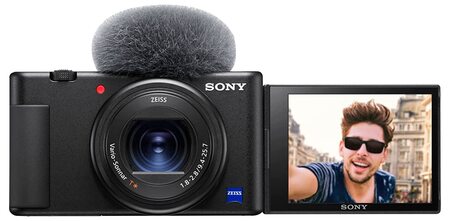
Key Feature:
- 20.1 MP Exmor RS CMOS sensor
- Large aperture 24-70mm ZEISS lens
- Directional 3-capsule inbuilt-mic with windscreen
- Vari-angle LCD screen for selfie shooting
- Product showcase setting for standout reviews
- 4K movie recording with Video EYE AF
- Real-time tracking for precise focus
- One-push Bokeh switch for background blur
- Time-lapse mode for cinematic effects
- Wireless communication technology with Bluetooth
Product Description:
The Sony ZV-1 Digital Vlog Camera is an efficient, compact camera designed to simplify content creation. Equipped with a 20.1 MP Exmor RS CMOS sensor that offers superior image quality for photos and videos, its large 24-70mm ZEISS Vario-Sonnar T lens ensures versatile photography. At the same time, its excellent low light performance provides users with all the tools necessary for the creation of high-quality content.
The ZV-1 features an inbuilt 3-capsule mic and windscreen to deliver high-quality audio capture, eliminating unwanted noise and wind interference. Its vari-angle LCD screen facilitates easy framing and shooting for self-recording vlogs or self-vlogging, so you can be confident you are capturing your best angles when shooting with confidence.
The ZV-1 features a product showcase setting to increase the visibility of products in reviews. This feature is particularly beneficial when providing demonstrations or showing product details, helping your reviews to stand out with clear visuals that leave an impactful impression.
This camera supports 4K movie recording, enabling you to capture stunning, high-resolution videos with stunning clarity. The Video EYE AF and real-time tracking ensure your subjects remain focused during movement; with its one-push Bokeh switch, you can easily add background blur effects that draw the eye toward your subject.
Best Uses:
The Sony ZV-1 camera is ideal for vlogging, content production and product reviews. With its compact size and versatile features such as vari-angle LCD screens and product showcase settings, this versatile camera is great for capturing high-quality videos and photos in various situations. Its versatile uses make this an invaluable companion.
The ZV-1’s 4K movie recording capabilities, combined with Video EYE AF and real-time tracking, ensure precision and professional-looking videos. It makes an ideal tool for creating engaging and captivating content for YouTube, social media platforms or other platforms.
Pros
- High-resolution sensor for excellent image quality.
- Versatile and high-performance ZEISS lens.
- Directional inbuilt-mic with windscreen for clear .
- Vari angle LCD screen for easy selfie shooting.
- Product showcase setting for enhanced product visibility.
- 4K movie recording with Video EYE AF and real-time tracking.
- One-push Bokeh switch for creative background blur.
Cons
- Limited zoom range.
5. Canon M50 Mark

Key Feature:
- 21.4 MP Still Resolution
- Mirrorless Form Factor
- Live View Feature
- 1x Optical Zoom
- 3-Inch Screen Size
- APS-C Photo Sensor Size
- In-camera YouTube Live Streaming
- 4K Vertical Video Recording for Social Media
- Wireless Connectivity with Smartphone and Cloud Storage
- Vertical Vlogging Made Easy
Product Description:
The Canon M50 Mark II mirrorless camera is advanced for photographers and videographers who require exceptional image quality and flexibility. Boasting a still effective resolution of 21.4 MP in its compact form factor, this device is ideal for quickly capturing captivating visuals when on the go.
One of the distinctive features of the Canon M50 Mark II is its live view function, enabling you to preview shots in real time for greater control and precision when framing images. Furthermore, its 3-inch display makes viewing your photos and navigating its settings simple.
Canon M50 Mark II boasts an APS-C photo sensor size that delivers superb image quality and allows greater depth of field control, providing great image quality, capturing landscapes, portraits or action shots. Producing sharp images with vibrant colors.
Content creators and social media enthusiasts will find YouTube Live streaming invaluable. Engage with your target audience in real-time by broadcasting directly from your camera ideal for social media platforms! With vertical 4K resolution films you can ensure your videos stand out.
Best Uses for the Canon M50 Mark:
The Canon M50 Mark II DSLR camera is a flexible option, boasting impressive features to meet the needs of both photographers and videographers. From its high-resolution sensor and live view capabilities to in-camera YouTube live streaming and 4K vertical video recording, this lightweight yet wireless connectivity device makes an excellent choice for content creators and social media enthusiasts.
Pros
- Live view for real-time composition.
- In-camera YouTube live streaming.
- 4K vertical video recording for social media.
- Wireless connectivity for easy file transfer.
- Excellent image quality and color reproduction.
- Compatible with Canon EF-M mount lenses.
Cons
- Limited optical zoom range.
6. Nikon Z50 Mirrorless Camera

Key feature:
- 20 MP Still Resolution
- Compact, Mirrorless Form Factor
- Time Lapse Feature
- 3x Optical Zoom
- 3.2-Inch Screen Size
- Full Frame (35mm) Photo Sensor Size
- HDMI Connector Type
- Additional Battery Included
- 64 GB SD Card Included
- Automatic Display Switching
Product Description:
The Nikon Z50 Mirrorless Camera with Z DX 16-50mm f/3.5-6.3 VR Lens is a lightweight yet powerful DSLR camera designed to deliver stunning image quality while remaining easy to use.
Nikon Z50’s time-lapse capability is one of its specific features, enabling you to easily create captivating videos of dynamic scenes such as sunsets, star trails and cityscapes. Capture time as it passes while adding creative flare and visual storytelling flair.
The 3x optical zoom of this camera gives it versatility for photographing subjects ranging from landscapes to portraits and allows you to get closer to subjects without compromising image quality – guaranteeing sharp and detailed results.
The Nikon Z50 features a large and vibrant 3.2-inch display to facilitate reviewing photos, navigating its menu settings, and seamlessly switching between monitor and viewfinder displays for a smooth shooting experience.
Nikon Z50 camera boasts a full-frame (35mm) photo sensor size for exceptional image quality and dynamic range, capturing fine details with rich colours while offering remarkable low-light performance. Furthermore, the included Z DX 16-50mm f/3.5-6.3 VR Lens further improves picture quality by offering an expandable focal length range.
Best Uses:
Travel Photography: Its compact and lightweight design and versatile zoom range make it an excellent travel camera.
Portrait Photography: Create professional-quality portraits using its high-resolution sensor and depth of field controls to achieve professional-looking shots.
Time-Lapse Videos: Captivating time-lapse videos of landscapes, cityscapes and other dynamic scenes can be created. Street Photography: Capture urban environments using its fast autofocus feature and compact form factor camera.
Creative Visual Storytelling: High-resolution stills and time-lapse capabilities enable creative visual storytelling with images and videos.
Pros
- Time-lapse feature for creative videos.
- Versatile 3x optical zoom range.
- Large and vibrant 3.2-inch display.
- Automatic display switching for seamless shooting.
- Full-frame photo sensor for excellent image quality.
- Included additional battery for extended shooting sessions.
Cons
- Limited maximum aperture range of the included lens.
7. Nikon Z50 Mirroless Camera

Key feature:
- 20.9 MP Still Resolution
- Compact, Mirrorless Form Factor
- Time Lapse, Bluetooth, Wi-Fi
- 3x Optical Zoom
- Full Frame (35mm) Photo Sensor Size
- UHD 4K Video Recording
- Up to 11 fps Shooting
- 3.2-Inch LCD Screen with 180° Flip Design
- Nikkor Z DX 16-50mm Lens Included
- Wireless Communication Technology: Wi-Fi
Product Description:
The Nikon Z50 Mirrorless Camera Combo is an intelligent DSLR with premium features for outstanding image quality and performance. Boasting 20.9 MP still resolution and featuring a compact mirrorless form factor, this camera delivers outstanding results for photography and videography.
Nikon Z50 cameras feature full-frame (35mm) photo sensors to produce images with exceptional image quality, capturing fine details and vibrant hues with stunning results. Whether it’s landscapes, portraits, or any other genre – Nikon Z50 produces stunning, high-resolution pictures!
With UHD 4K video recording at 30 frames per second and Full HD recording up to 120 fps, this camera makes it possible to capture cinematic-quality videos with exquisite details and clarity – an essential tool for videographers and content creators who require high-quality footage.
The 3.2-inch LCD screen with its 180deg flip design offers great convenience and flexibility when taking selfies, vlogs, or creative shots from different angles. It provides a clear and detailed display for viewing photos and navigating camera menu settings.
The Nikon Z50 Combo comes equipped with the Nikkor Z DX 16-50mm lens, offering an ideal focal length range for various photography styles and providing superb sharpness and image quality – making this combination lens an excellent everyday shooting solution.
Best Uses:
The Nikon Z50 Mirrorless Camera Combo is a powerful and versatile DSLR camera that offers exceptional image quality, video recording capabilities, and a range of features for creative expression. With its high-resolution sensor, UHD 4K video recording, fast shooting speed, and compact design, it is well-suited for various types of photography and videography. The Nikkor Z DX 16-50mm lens provides versatility and excellent image quality.
Overall performance and features of the Nikon Z50 make it a strong contender for the title of the best DSLR camera.
Pros
- UHD 4K video recording capability.
- Fast shooting speed with AE/AF.
- Flip-design LCD screen for versatility.
- Included Nikkor Z DX 16-50mm lens.
- Bluetooth and Wi-Fi connectivity for easy file transfer.
- Excellent image quality and color reproduction.
- User-friendly interface and controls.
- Compatible with a wide range of Nikon lenses.
Cons
- No in-body image stabilization.
8. Nikon D7500

Key Feature:
- 20.9 MP Still Resolution
- DSLR Form Factor
- Special Effects Modes
- 5x Optical Zoom
- 3.2-Inch Screen Size
- APS-C Photo Sensor Size
- Bluetooth and Wi-Fi Connectivity
- 4K UHD Video Recording at 30 fps
- 51-Point AF System
- High ISO Sensitivity
Product Description:
The Nikon D7500 DSLR camera boasts exceptional image quality and versatility, thanks to its 20.9 MP still resolution and robust build. Ideal for photography enthusiasts as well as professionals.
One of the highlights of the Nikon D7500’s special effects modes is their creative touch – adding playful camera effects like toy camera effects or vibrant shots with vibrant hues to your photos is easy with this camera’s wide variety of special effects modes.
The 5x optical zoom provides versatile captures for landscapes to portraits. You can get closer to your subject without compromising image quality for stunningly sharp and detailed images.
The Nikon D7500 boasts an expansive and vibrant 3.2-inch screen for reviewing photos and navigating its menu settings. Bluetooth and Wi-Fi connectivity makes transferring photos wirelessly possible and controlling it remotely using your smartphone.
Nikon D7500 ability to record 4K Ultra High Definition videos at 30 frames per second makes it an invaluable videography tool, perfect for capturing stunning, high-resolution footage with vivid details and rich hues.
The 51-point autofocus (AF) system ensures fast and accurate focusing for sharp images even under difficult shooting conditions. Furthermore, its high ISO sensitivity with native ISO of 51200 and expanded ISO of 1,640,000 helps you capture low-light scenes with minimal noise.
Best Uses:
The Nikon D7500 DSLR camera offers exceptional image quality and features that elevate your photography experience. It is perfectly suited for wildlife, landscape, portraiture and travel photography – not to mention some limitations in lens selection and image stabilization – though this universal DSLR’s overall performance and features make it a strong candidate for top honours as the best DSLR.
Pros
- Robust build and ergonomic design.
- Special effects modes for creative shots.
- Versatile optical zoom range.
- Large and vibrant display.
- Bluetooth and Wi-Fi connectivity for easy file transfer.
- 4K UHD video recording capability.
- Fast and accurate autofocus system.
- High ISO sensitivity for low-light photography.
- Compatible with a wide range of Nikon lenses.
Cons
- High Price range.
9. Nikon Z6

Key Feature:
- 24.5MP FX-Format BSI CMOS Sensor
- Dual EXPEED 6 Processors
- UHD 4K Video Recording
- 273-Point Phase-Detect AF System
- Vibration Reduction with Sensor Shift
- NIKKOR Z 24-70mm f/4 S Lens
- Robust Magnesium Alloy Chassis
- Weather-resistant Design
- Bluetooth 4.0 Connectivity
- Extra Battery & 2.9x Optical Zoom
Product Description:
Enhance your photography and videography with the Nikon Z6 II Mirrorless Camera – the Best DSLR Camera in its class. Boasting a 24.5MP FX-Format BSI CMOS Sensor and Dual EXPEED 6 Processors, this camera provides sharp images with an impressive processing power for enhanced images and videography.
The Nikon Z6 II can capture every moment from quiet moments to exciting action, with its UHD 4K video recording capability, making it perfect for photography and videography. Furthermore, Full HD 1080p recording at 120p for slow-motion playback creates crisp images every time – perfect for slow-motion playback!
Vibration Reduction with Sensor-Shift ensures your shots always come out perfect, no matter the conditions. Plus, the NIKKOR Z 24-70mm f/4 S Lens gives you more scope when taking photographs of different subjects.
This DSLR camera features a sturdy magnesium alloy chassis designed to resist dust and weather elements, providing long-term use in any environment or climate. Plus, Bluetooth 4.0 support for easy connectivity with other devices.
Best Uses:
This camera is perfect for a variety of uses. With its high-resolution sensor and impressive video capabilities, it’s an excellent choice for landscape photography, wildlife photography, and professional portraiture. It’s also fantastic for videography, making it perfect for vloggers, filmmakers, and content creators. The Nikon Z6 II Mirrorless Camera is a tool designed to capture your vision, no matter the subject or the conditions.
Pros
- 24.5MP FX-Format BSI CMOS Sensor ensures top-notch image clarity.
- UHD 4K Video Recording with Full HD 1080p slow-motion playback.
- Robust magnesium alloy chassis with weather-resistant features.
- 273-Point Phase-Detect AF System for quick and precise focus.
- Wireless Communication Technology with Bluetooth 4.0.
Cons
- 2.9x optical zoom might be limited for distant subjects.
- May be challenging to navigate for first-time DSLR users.
Factors to be considered while buying a DSLR camera
The purpose
Suppose photography is your career goal or just a hobby to enjoy in the near future. You require a camera which meets all your requirements as a beginner. Otherhand if you want to engage in sports, you’ll need a camera that supports the live-view mode.
Sensors
For a beginner, it is essential to look at DSLRs with excellent image quality. Why is this important? Sensors can be responsible for outstanding image quality. Sensors differ in Resolution and Megapixel. Remember that the bigger the sensor, the better image quality.
Viewfinder
What is the significance of this? The viewfinder gathers light from lens and then directs it to the mirror and through the viewfinder. This lets you see the exact image of the subject being recorded.
Advance Controls features
Be sure to choose a DSLR that has manual mode control. This feature will allow you the option of changing the settings. The majority of DSLR cameras come with larger ISO ranges as well as larger sensors.
Speed
Speed is often a major factor in the field of photography. The majority of DSLR come with more speedy shutter speeds. Sony, Canon, and Nikon are among the top camera brands for speed.
Image quality
Image quality is among the most crucial factors novices should consider when purchasing cameras. Your quality photos depend on various factors, including the lens quality, sensor size and the camera’s optical quality.
The feature set
A majority of DSLRs feature basic features. However, some manufacturers and models have enhanced certain features. The cameras vary with respect to ISO, the range of their cameras, as well as resolution and autofocus points.
Design
Anyone new to photography should consider DSLRs with metallic housing. It is essential to purchasing a camera that has solid construction. The less expensive cameras have a plastic housing; however other models could have metallic materials.
Cost
Before purchasing a camera, every beginner must be aware of the cost. The higher the sum you’re willing to invest, the better equipment you can buy. The most advanced equipment always comes with top-quality lenses. Why is this important? The quality of the photograph remains dependent on the lens quality attached to the camera.
Advantages And Disadvantages Of DSLR Cameras
Advantages:
- Superior Image Quality: DSLRs have large sensors that provide better image quality, detail, and low-light performance.
- Versatility: The ability to switch lenses gives the photographer more creative control.
- Speed: DSLRs offer fast autofocus and shutter speed, making them ideal for action and sports photography.
- Durability: Most DSLR cameras are built to last with robust construction.
Disadvantages:
- Size and Weight: DSLRs are larger and heavier than most other types of cameras, making them less portable.
- Cost: The initial investment and cost of additional lenses and accessories can be high.
- Complexity: DSLRs come with a learning curve, especially for those new to photography.
Frequently Asked Question (FAQs)
Q. What is a DSLR?
They can be interchanged to a certain extent, and Professional photographers are equipped with a wide range of lenses, often with multiple cameras.
Q. how does the DSLR camera function?
Understanding their basic concepts isn’t rocket science. It can be explained through the process of light.
The light first hits the rear of the lens. It then travels through the lens and transforms it into the photographer’s desired shape. Then, it travels to the mount for the lens and onto the camera.
It then comes into contact with the principal mirror. The mirror is able to reflect most of it upwards, towards the viewfinder. A pentaprism or pentamirror redirects it to the eyes of the person looking at it. This lets you be able to see precisely what the lens is seeing.
In DSLRs and SLRs equipped with autofocus, the main mirror reflects a tiny portion of the incoming light. Then, it gets caught by the secondary mirror. This directs it towards the autofocus sensor.
When you click the shutter button to snap photos when you press the shutter button, the mirrors rotate up. This lets light hit the sensor. Since the mirror’s main mirror no longer reflects anything, it is possible to see an absence of light in the viewfinder.
Its shutter mechanism is located right in the sensor’s front, is able to open. It exposes the image. It shuts down after a certain duration of time. The duration is known as shutter speed.
What is the reason you should have a DSLR?
SLRs have been used for over a century, and most people think of them by the word “camera”.
The technical benefit of modern DSLRs is that they offer a direct, clear view through the lens. This means that low-light or latency image quality is not an issue. It’s not the case for some bridge, mirrorless, or compact cameras.
There are DSLRs starting from entry-level models to the most high-end medium-format models. These are likely to cost 5 figures. But, they can be interchanged. It is possible to put a professional lens on a basic of body. Therefore, there are numerous in all categories with every budget. Try an online tool for camera comparison to assess the specs and capabilities offered by DSLR cameras.


